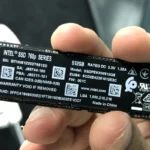Painting can be a fun project. But picking the right tools is key. A good paint roller makes the job much easier and faster.
The best paint rollers have soft nap covers that hold lots of paint and spread it evenly. They should also have sturdy frames that don’t wobble. This helps you paint smooth walls without streaks.
Lambswool rollers work well for oil-based paints. For latex paints synthetic covers are better. The nap length matters too. Short naps are for smooth surfaces. Long naps work on rough textures. Picking the right roller makes painting go smoothly.
Fundamentals of Foam Rolling
Foam rolling is a simple way to help your muscles feel better. The type of roller you use matters a lot. Let’s look at what makes a good foam roller.
Understanding Foam Density and Firmness
Foam rollers come in different levels of firmness. Soft rollers are good for beginners. They don’t hurt as much when you use them. Medium-density foam rollers work well for most people. They give enough pressure without too much pain.
Firm rollers are for people who have used foam rollers before. They can help muscles more but might hurt more too. Extra-firm rollers are the hardest. Only use these if you’re very used to foam rolling.
The firmness you choose depends on what feels right for you. Start soft and work your way up if needed.
The Different Shapes and Sizes of Rollers
Foam rollers come in many shapes and sizes. The most common is a round tube shape. These work well for most body parts.
Short rollers are about 12 inches long. They’re easy to carry around. Longer foam rollers can be up to 36 inches. These are good for your back or legs.
Some rollers have bumps or ridges. These can help get deeper into tight muscles. Flat rollers exist too. They’re good for balance exercises.
Pick a size that fits the parts of your body you want to roll. Bigger isn’t always better. Choose what works for you and your needs.
Enhancing Muscle Recovery and Performance
Foam rollers help muscles heal faster and work better. They come with special features to target different needs.
Advanced Features for Specialized Use
Some rollers have bumps and ridges. These help reach deep into muscles. Vibrating foam rollers are great for sore spots. They shake to loosen tight areas.
Firm rollers give more pressure. This is good for athletes with tough muscles. Soft rollers are better for beginners or sensitive people.
Some rollers have different textures on each side. This lets you choose how much pressure you want. Others have special shapes to fit around body parts.
Heat-up rollers exist too. They warm muscles before a workout. This can prevent injury.
Selecting the Right Roller for Your Needs
Pick a roller based on your goals. If you’re new, start with a smooth, soft roller. For deep tissue work, choose a firm, textured one.
Size matters too. Long rollers work well for back muscles. Short ones are good for arms and legs.
Think about where you’ll use it. Travel-size rollers fit in bags. Bigger ones are better for home use.
Your fitness level counts. Pro athletes might like intense rollers. Regular folks may prefer gentler options.
Ask a doctor or trainer for advice. They can suggest the best roller for your body.
Frequently Asked Questions
Choosing the right roller matters for many activities. Good rollers make tasks easier and give better results. Let’s look at key features for different types of rollers.
What features should I consider when selecting roller skates for a novice?
Beginners need stable skates. Look for wide wheels and a low center of gravity. Ankle support is crucial. Choose adjustable skates that grow with the user. Comfort and proper fit are vital for safety.
What factors determine the best nap size for painting walls and ceilings?
Nap size affects paint coverage. Shorter naps work well on smooth surfaces. Longer naps are better for textured walls. A 3/8-inch nap suits most interior walls. Use 1/2-inch or longer for rough surfaces.
How does one choose a high-quality paint roller for a smooth finish?
Quality rollers give even coverage. Pick dense foam rollers for smooth surfaces. Microfiber rollers hold more paint. Look for lint-free options. A sturdy frame prevents sagging during use.
Which attributes are critical in a roller bearing for optimal performance?
Durability is key for roller bearings. Look for high-grade steel construction. Proper lubrication channels matter. Consider load capacity and speed ratings. Sealed bearings resist dirt and moisture better.
What characteristics define the best foam roller for beginners?
Beginners need firm yet comfortable foam rollers. A medium-density roller is a good start. Look for smooth surfaces to prevent bruising. Shorter lengths are easier to control. Textured rollers can be too intense for new users.
What criteria are used to select the most effective paint roller for emulsion applications?
For emulsion paints choose synthetic fiber rollers. They resist shedding and last longer. A medium nap works well. Look for rollers that don’t absorb too much paint. A threaded handle allows use with extension poles.







